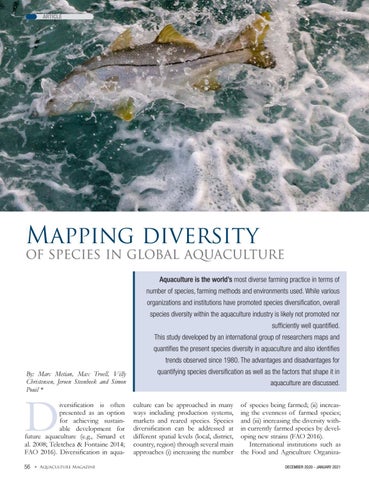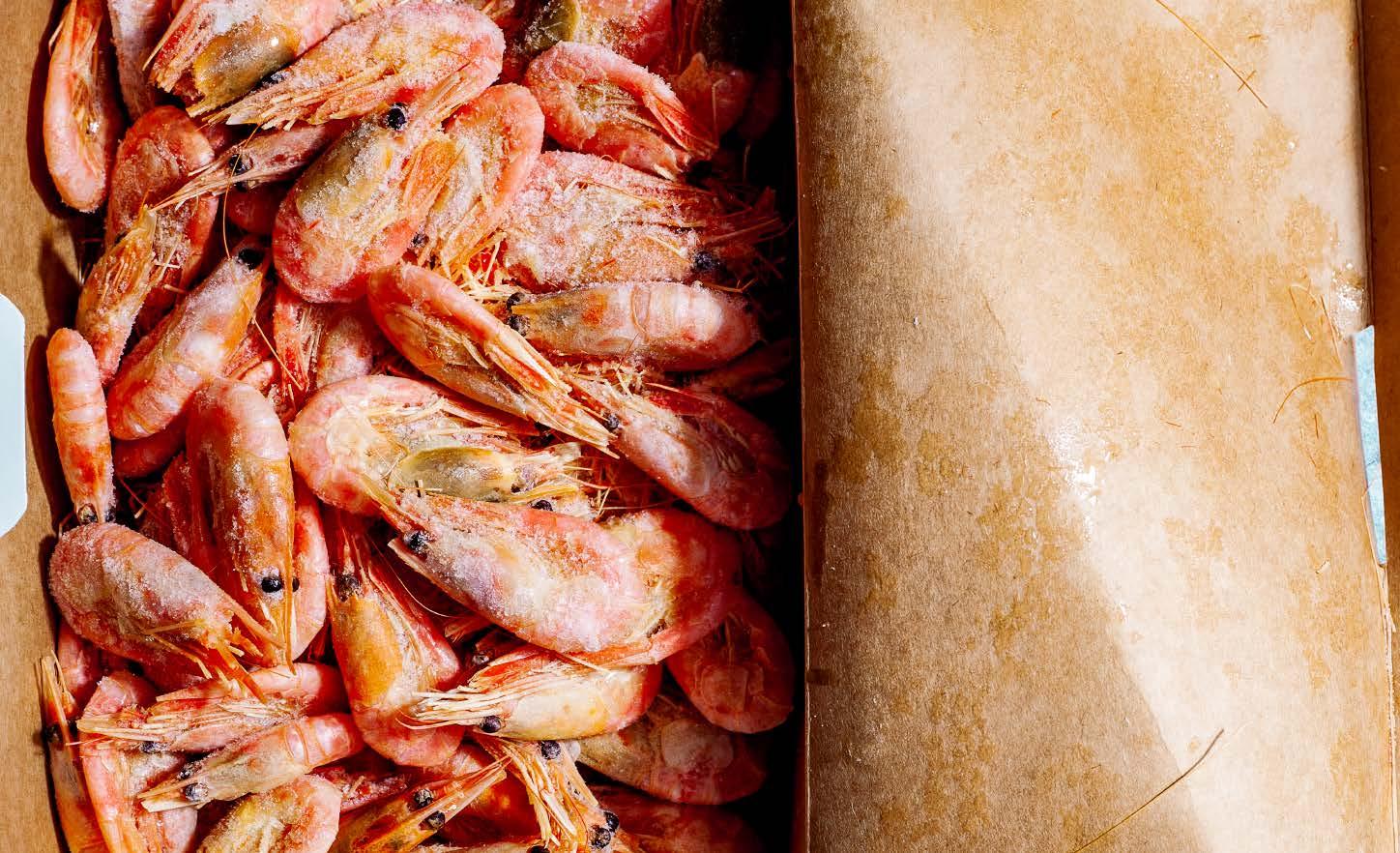ARTICLE
Mapping diversity
of species in global aquaculture Aquaculture is the world’s most diverse farming practice in terms of number of species, farming methods and environments used. While various organizations and institutions have promoted species diversification, overall species diversity within the aquaculture industry is likely not promoted nor sufficiently well quantified. This study developed by an international group of researchers maps and quantifies the present species diversity in aquaculture and also identifies trends observed since 1980. The advantages and disadvantages for By: Marc Metian, Max Troell, Villy Christensen, Jeroen Steenbeek and Simon Pouil *
D
iversification is often presented as an option for achieving sustainable development for future aquaculture (e.g., Simard et al. 2008; Teletchea & Fontaine 2014; FAO 2016). Diversification in aqua56 Âť
quantifying species diversification as well as the factors that shape it in aquaculture are discussed. culture can be approached in many ways including production systems, markets and reared species. Species diversification can be addressed at different spatial levels (local, district, country, region) through several main approaches (i) increasing the number
of species being farmed; (ii) increasing the evenness of farmed species; and (iii) increasing the diversity within currently farmed species by developing new strains (FAO 2016). International institutions such as the Food and Agriculture OrganizaDECEMBER 2020 - JANUARY 2021









